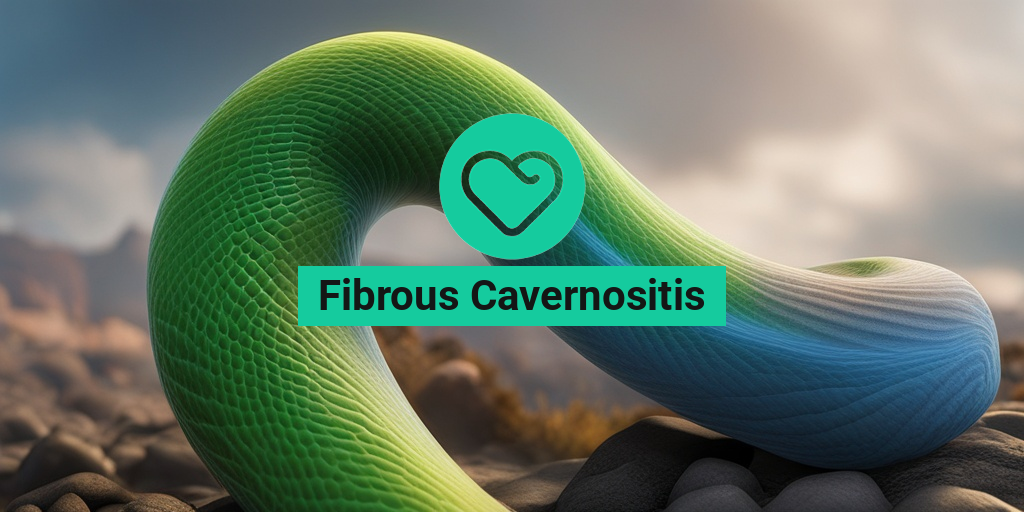What Is Fibrous Cavernositis?
Fibrous cavernositis is a relatively rare and complex condition that affects the corpora cavernosa, the spongy tissue in the penis responsible for erectile function. It’s a topic of significant interest and concern, especially among men who’ve been diagnosed with it or are experiencing symptoms that might be related to this condition. So, let’s dive in and explore what fibrous cavernositis is all about! 😊
The Anatomy of the Penis
To understand fibrous cavernositis, it’s essential to have a basic grasp of the penile anatomy. The penis is composed of three main parts: the corpora cavernosa, the corpus spongiosum, and the tunica albuginea. The corpora cavernosa is the spongy tissue that runs along the length of the penis, and it’s this area that’s primarily affected by fibrous cavernositis.
What Causes Fibrous Cavernositis?
Research suggests that fibrous cavernositis might be caused by a combination of genetic and environmental factors. Some potential contributors to the development of this condition include:
- Genetic predisposition: Some men may be more likely to develop fibrous cavernositis due to their genetic makeup.
- Vascular issues: Problems with blood flow and circulation can contribute to the development of fibrous cavernositis.
- Inflammation: Chronic inflammation in the penis can lead to the formation of scar tissue, which can contribute to fibrous cavernositis.
How Does Fibrous Cavernositis Affect the Penis?
Fibrous cavernositis is characterized by the formation of scar tissue in the corpora cavernosa, which can lead to a range of complications. The scar tissue can cause the penis to become less flexible and more prone to curvature, making it difficult to achieve and maintain an erection. In some cases, the scar tissue can also cause pain and discomfort during erection.
If you’re struggling to understand fibrous cavernositis or are concerned about your symptoms, it’s essential to consult with a healthcare professional who can provide personalized guidance and support. Additionally, resources like Yesil Health AI can offer evidence-based information and answers to your health questions. 🤝
Fibrous Cavernositis Symptoms
Fibrous cavernositis can present with a range of symptoms, which can vary in severity and impact from person to person. If you’re experiencing any of the following symptoms, it’s essential to consult with a healthcare professional for an accurate diagnosis and appropriate treatment:
Common Symptoms of Fibrous Cavernositis
- Painful erection: One of the most common symptoms of fibrous cavernositis is pain or discomfort during erection.
- Curvature of the penis: The formation of scar tissue can cause the penis to curve or bend, making it difficult to engage in sexual activity.
- Difficulty achieving or maintaining an erection: Fibrous cavernositis can make it challenging to get or keep an erection, leading to sexual dysfunction.
- Reduced penis size: Some men with fibrous cavernositis may experience a reduction in penis size, particularly during erection.
- Hard flaccid syndrome: This symptom is characterized by the penis remaining hard and rigid, even when flaccid.
Remember, if you’re experiencing any symptoms that are causing concern or impacting your daily life, it’s crucial to seek medical attention. A healthcare professional can help you determine the underlying cause of your symptoms and develop an appropriate treatment plan. 💊

Fibrous Cavernositis Causes and Risk Factors
Fibrous cavernositis, a condition characterized by the hardening and contracting of the corpora cavernosa in the flaccid state, can be a complex and multifaceted issue. While the exact causes of fibrous cavernositis are still not fully understood, research has identified several potential risk factors that may contribute to its development.
Genetic Predisposition
Some studies suggest that genetic factors may play a role in the development of fibrous cavernositis. Individuals with a family history of the condition may be more likely to experience symptoms themselves. Additionally, certain genetic mutations may affect the structure and function of the corpora cavernosa, increasing the risk of fibrous cavernositis.
Vascular Issues
Vascular problems, such as endothelial dysfunction, may also contribute to the development of fibrous cavernositis. Endothelial dysfunction refers to the inability of blood vessels to dilate and constrict properly, leading to reduced blood flow to the penis. This can cause damage to the corpora cavernosa, leading to fibrosis and scarring.
Inflammation and Oxidative Stress
Inflammation and oxidative stress may also play a role in the development of fibrous cavernositis. Chronic inflammation can lead to the production of free radicals, which can damage the corpora cavernosa and contribute to fibrosis. Additionally, inflammation can cause the release of pro-inflammatory cytokines, which can further exacerbate the condition.
Lifestyle Factors
Certain lifestyle factors, such as smoking, alcohol consumption, and physical inactivity, may also increase the risk of developing fibrous cavernositis. These factors can contribute to vascular problems, inflammation, and oxidative stress, all of which can contribute to the development of the condition.
Other Potential Risk Factors
Other potential risk factors for fibrous cavernositis include diabetes, high blood pressure, and high cholesterol. These conditions can all contribute to vascular problems and inflammation, increasing the risk of developing fibrous cavernositis.
Fibrous Cavernositis Diagnosis
Diagnosing fibrous cavernositis can be a complex process, as the symptoms can be similar to those of other conditions. A thorough medical history and physical examination are essential for diagnosing fibrous cavernositis.
Physical Examination
A physical examination may reveal hardening or induration of the corpora cavernosa, which can be a key indicator of fibrous cavernositis. The doctor may also perform a Doppler ultrasound to assess blood flow to the penis.
Imaging Tests
Imaging tests, such as MRI or CT scans, may be used to visualize the corpora cavernosa and assess the extent of fibrosis. These tests can help identify any structural abnormalities that may be contributing to the condition.
Lab Tests
Lab tests, such as blood tests for inflammatory markers, may be used to assess the level of inflammation in the body. These tests can help identify underlying conditions that may be contributing to fibrous cavernositis.
💡 Remember, an accurate diagnosis is essential for developing an effective treatment plan for fibrous cavernositis. If you’re experiencing symptoms, don’t hesitate to consult with a healthcare professional.

Fibrous Cavernositis Treatment Options
Fibrous cavernositis, also known as hard flaccid syndrome, is a condition characterized by the hardening and contracting of the corpora cavernosa in the flaccid state. While it can be a challenging condition to manage, there are several treatment options available to help alleviate its symptoms. In this section, we’ll explore the various treatment options for fibrous cavernositis.
Medical Treatments
Medical treatments for fibrous cavernositis typically focus on addressing the underlying causes of the condition, such as vascular disease, hormonal imbalances, or nerve damage. Some common medical treatments include:
- Vasodilators: These medications help to dilate blood vessels, improving blood flow to the penis and reducing symptoms of fibrous cavernositis.
- Hormone therapy: Hormone replacement therapy may be necessary to address hormonal imbalances that contribute to fibrous cavernositis.
- Nerve stimulation: Nerve stimulation therapies, such as low-intensity shockwave therapy, can help to improve nerve function and reduce symptoms.
Surgical Interventions
In some cases, surgical interventions may be necessary to treat fibrous cavernositis. These can include:
- Penile implant surgery: This involves the implantation of a penile prosthesis to help restore normal erectile function.
- Tunica albuginea plication: This procedure involves the plication (folding) of the tunica albuginea, a layer of tissue surrounding the corpora cavernosa, to help reduce symptoms.
Lifestyle Changes
In addition to medical and surgical treatments, making lifestyle changes can also help to alleviate symptoms of fibrous cavernositis. These can include:
- Exercise regularly: Regular exercise can help to improve blood flow and overall cardiovascular health, reducing symptoms of fibrous cavernositis.
- Quit smoking: Smoking can exacerbate symptoms of fibrous cavernositis, so quitting can help to improve overall health.
- Maintain a healthy diet: Eating a balanced diet rich in fruits, vegetables, and whole grains can help to improve overall health and reduce symptoms.
Fibrous Cavernositis Home Remedies
While medical treatments and lifestyle changes can be effective in managing fibrous cavernositis, some men may also find relief through home remedies. Keep in mind that these remedies may not be suitable for everyone, and it’s essential to consult with a healthcare professional before trying any new treatments. Here are some home remedies that may help:
Dietary Changes
Certain dietary changes may help to alleviate symptoms of fibrous cavernositis. These can include:
- Increase omega-3 intake: Omega-3 fatty acids, found in foods like salmon and walnuts, can help to reduce inflammation and improve cardiovascular health.
- Consume antioxidants: Antioxidants, found in foods like berries and leafy greens, can help to reduce oxidative stress and improve overall health.
Herbal Remedies
Certain herbal remedies may also help to alleviate symptoms of fibrous cavernositis. These can include:
- Ginkgo biloba: Ginkgo biloba may help to improve blood flow and reduce symptoms of fibrous cavernositis.
- Panax ginseng: Panax ginseng may help to improve erectile function and reduce symptoms.
Penile Massage
Penile massage may also help to alleviate symptoms of fibrous cavernositis. This can involve:
- Manual stretching: Gentle manual stretching of the penis can help to improve blood flow and reduce symptoms.
- Vacuum therapy: Vacuum therapy devices can help to improve blood flow and reduce symptoms.
Remember to consult with a healthcare professional before trying any new treatments, including home remedies. They can help you determine the best course of treatment for your individual case of fibrous cavernositis. 💊

Fibrous Cavernositis Complications
Fibrous cavernositis is a condition characterized by the formation of fibrous tissue in the cavernous bodies of the penis, leading to a range of complications that can significantly impact a person’s quality of life. While the condition itself is not life-threatening, the complications that arise from it can be severe and debilitating.
Penile Pain and Discomfort
One of the most common complications of fibrous cavernositis is penile pain and discomfort. The formation of fibrous tissue can lead to inflammation and scarring, causing pain during erection, intercourse, or even during daily activities. This pain can be severe and can significantly impact a person’s sexual function and overall well-being.
Hard Flaccid Syndrome
Fibrous cavernositis is also associated with Hard Flaccid Syndrome, a condition characterized by the hardening and contracting of the corpora cavernosa in the flaccid state. This can lead to a range of symptoms, including penile pain, curvature, and difficulty achieving or maintaining an erection.
Psychological Impact
The complications of fibrous cavernositis can also have a significant psychological impact on individuals. The condition can lead to feelings of anxiety, depression, and low self-esteem, particularly if left untreated. The emotional toll of living with fibrous cavernositis can be significant, and it’s essential to address these concerns as part of a comprehensive treatment plan.
Impact on Relationships
Fibrous cavernositis can also impact relationships, particularly intimate relationships. The condition can lead to feelings of frustration, embarrassment, and shame, making it difficult to maintain a healthy and fulfilling sexual relationship. It’s essential to communicate openly and honestly with partners about the condition and its impact on daily life.
Fibrous Cavernositis and Erectile Dysfunction
Fibrous cavernositis is often associated with erectile dysfunction (ED), a condition characterized by the inability to achieve or maintain an erection. The formation of fibrous tissue in the cavernous bodies can disrupt blood flow to the penis, leading to ED.
The Link Between Fibrous Cavernositis and ED
Research suggests that fibrous cavernositis is a significant risk factor for ED. The condition can lead to a range of changes in the penis, including scarring, inflammation, and fibrosis, which can disrupt blood flow and lead to ED. In fact, studies have shown that up to 50% of men with fibrous cavernositis also experience ED.
Treatment Options for Fibrous Cavernositis and ED
Treating fibrous cavernositis and ED requires a comprehensive approach that addresses both the physical and psychological aspects of the condition. Treatment options may include medications, such as phosphodiesterase type 5 inhibitors, as well as lifestyle changes, such as exercise, diet, and stress management. In some cases, surgery may be necessary to remove scar tissue and restore blood flow to the penis.
It’s essential to work with a healthcare provider to develop a personalized treatment plan that addresses the unique needs and concerns of each individual. With the right treatment and support, it’s possible to manage the symptoms of fibrous cavernositis and ED, and improve overall quality of life. 💊

Fibrous Cavernositis: Frequently Asked Questions
Fibrous Cavernositis is a complex condition that affects the penis, and it’s natural to have many questions about it. Here are some frequently asked questions about Fibrous Cavernositis:
What is Fibrous Cavernositis?
Fibrous Cavernositis is a condition characterized by the hardening and contracting of the corpora cavernosa in the flaccid state, leading to erectile dysfunction and other symptoms.
What are the symptoms of Fibrous Cavernositis?
Common symptoms of Fibrous Cavernositis include:
- Erectile dysfunction
- Painful erections
- Difficulty achieving or maintaining an erection
- Abnormal curvature of the penis
- Pain or discomfort during sex
How is Fibrous Cavernositis diagnosed?
Fibrous Cavernositis is typically diagnosed through a combination of physical examination, medical history, and imaging tests such as ultrasound or MRI.
Is Fibrous Cavernositis treatable?
Yes, Fibrous Cavernositis can be treated with a range of options, including medications, lifestyle changes, and in some cases, surgery. It’s essential to consult a healthcare professional for personalized advice.
Can Fibrous Cavernositis be prevented?
While there is no surefire way to prevent Fibrous Cavernositis, maintaining a healthy lifestyle, managing underlying health conditions, and avoiding certain risk factors can help reduce the risk of developing the condition.
How does Fibrous Cavernositis affect daily life?
Fibrous Cavernositis can significantly impact daily life, causing emotional distress, relationship problems, and decreased self-esteem. It’s essential to seek support from healthcare professionals, loved ones, and support groups.
Is Fibrous Cavernositis related to other conditions?
Yes, Fibrous Cavernositis has been linked to other conditions, such as Peyronie’s disease, Dupuytren’s contracture, and certain autoimmune disorders. If you have any concerns, consult a healthcare professional.
Where can I find more information about Fibrous Cavernositis?
There are many resources available to learn more about Fibrous Cavernositis, including online forums, support groups, and reputable health organizations. Always consult credible sources and consult a healthcare professional for personalized advice. 🤝




